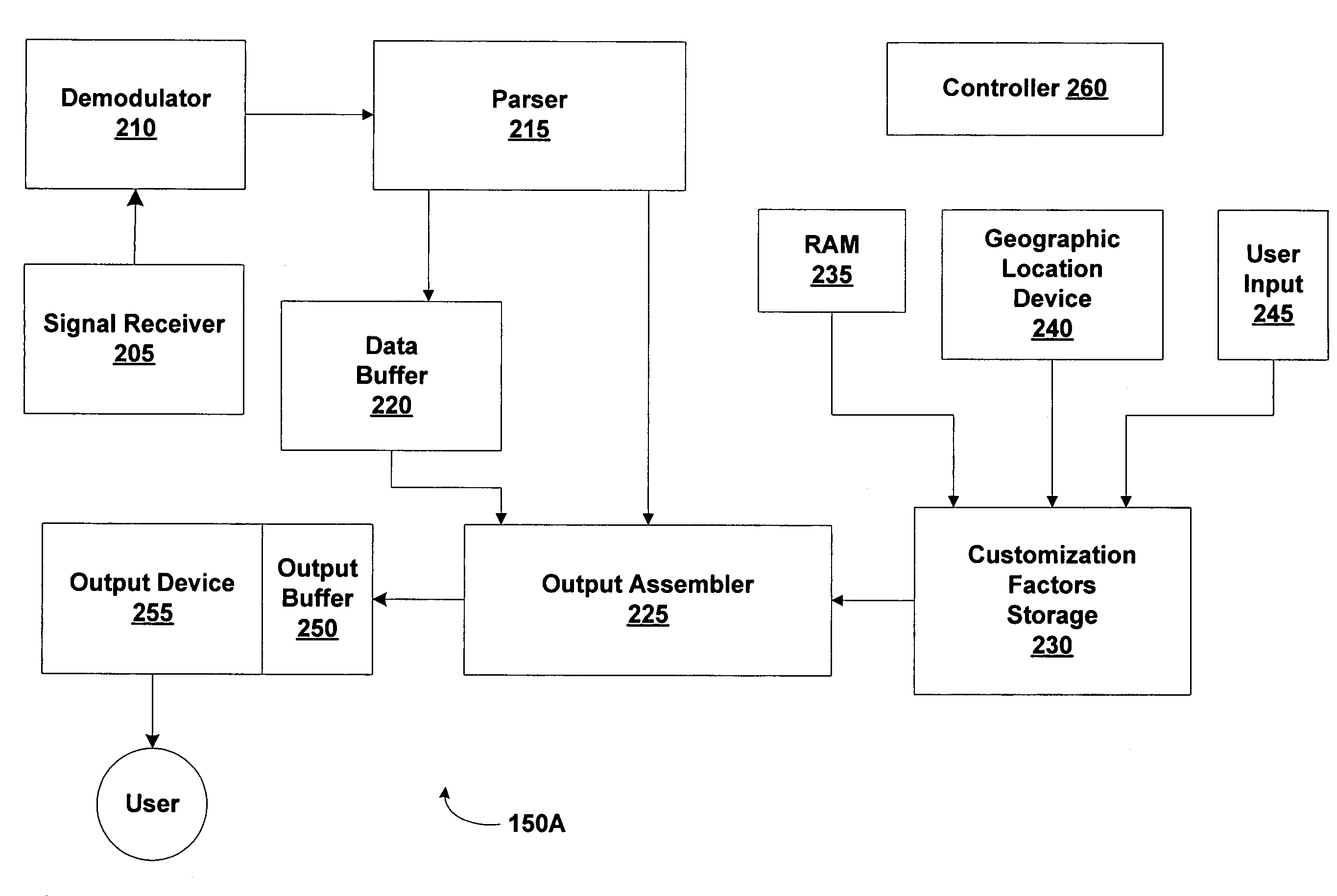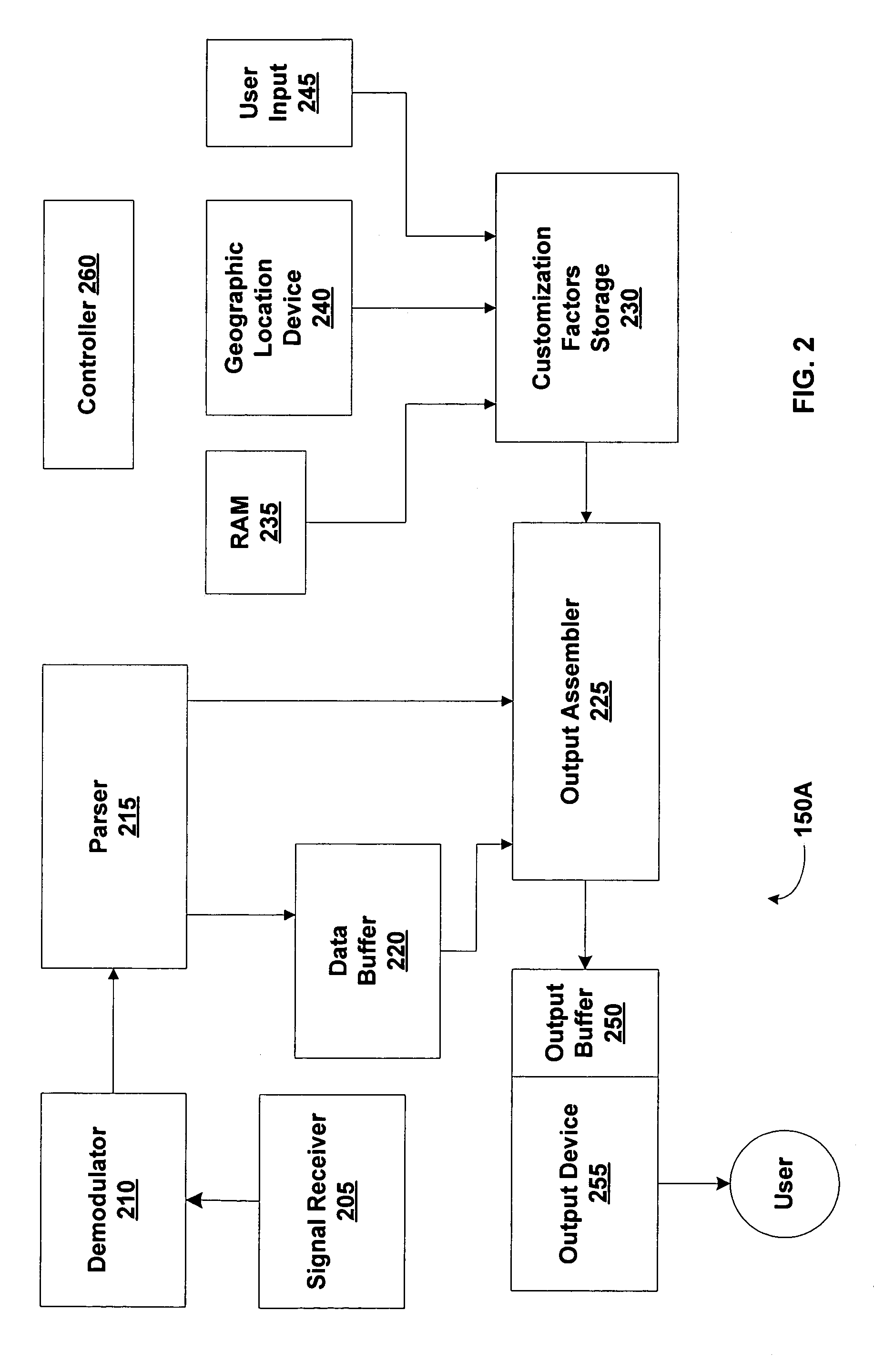Content customization in asymmetric communication systems
- Summary
- Abstract
- Description
- Claims
- Application Information
AI Technical Summary
Benefits of technology
Problems solved by technology
Method used
Image
Examples
Embodiment Construction
[0029]An excess of information is provided from a transmitter to a receiver. The information is in excess because more information is provided than would normally be conveyed to a user in real time. A subset of the provided data is included in an output stream from the receiver to be perceived by the user. For example, in some embodiments the receiver is configured to display a video output stream on a television set to be observed by the user. The subset of the provided data is determined responsive to one or more variable customization factors associated with each receiver. Thus, different users may receive different customized output streams resulting from the same broadcast.
[0030]The customization factors optionally include geographic information, referred to as the “location of a user.” In various embodiments the location of a user includes the output of a global positioning system, data provided to the receiver by the user, data received from a cellular telephone network, data...
PUM
 Login to View More
Login to View More Abstract
Description
Claims
Application Information
 Login to View More
Login to View More - R&D
- Intellectual Property
- Life Sciences
- Materials
- Tech Scout
- Unparalleled Data Quality
- Higher Quality Content
- 60% Fewer Hallucinations
Browse by: Latest US Patents, China's latest patents, Technical Efficacy Thesaurus, Application Domain, Technology Topic, Popular Technical Reports.
© 2025 PatSnap. All rights reserved.Legal|Privacy policy|Modern Slavery Act Transparency Statement|Sitemap|About US| Contact US: help@patsnap.com



